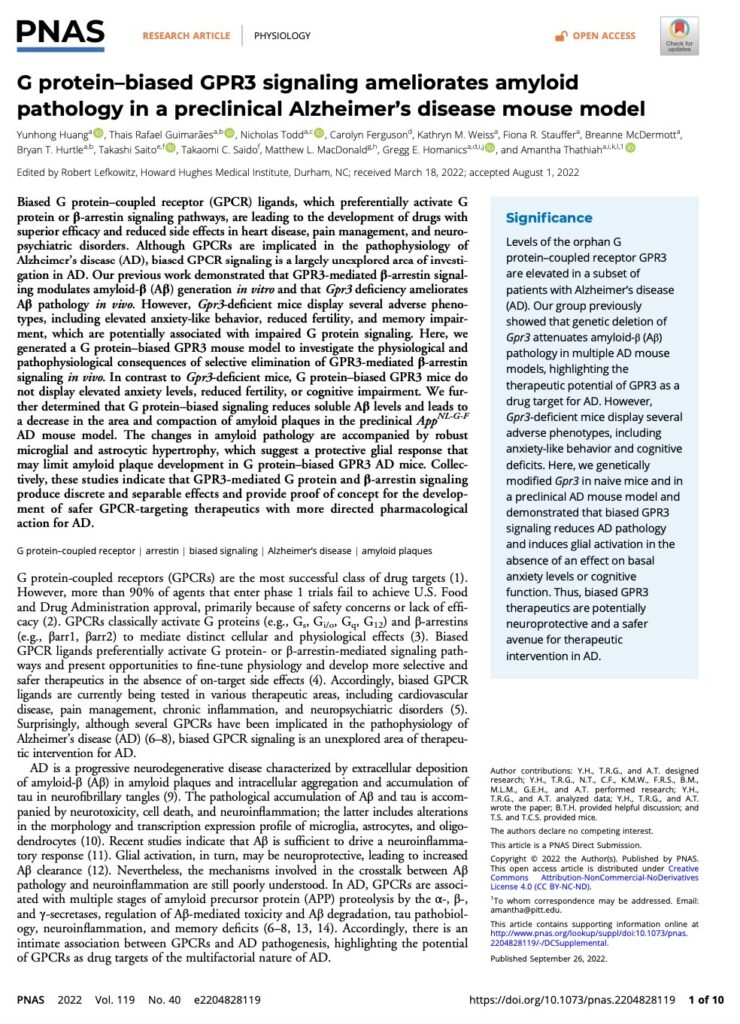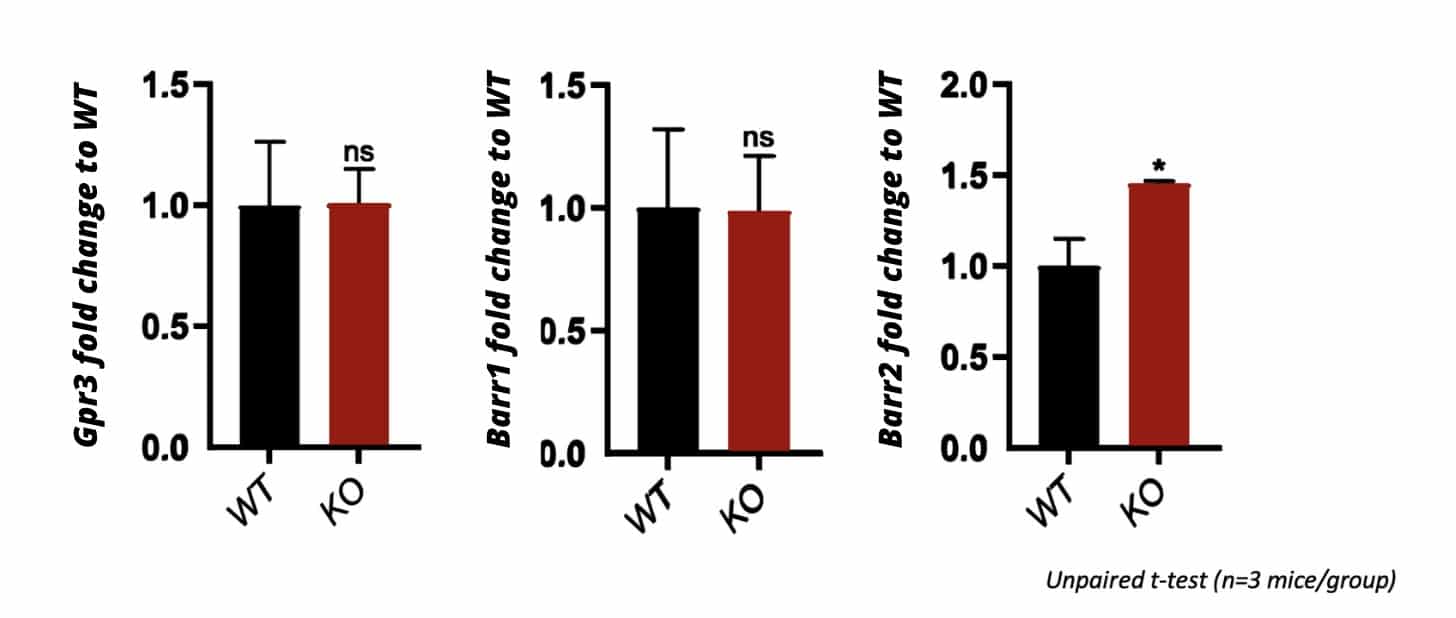Amantha Thathiah, PhD
Assistant Professor of Neurobiology at the University of Pittsburgh School of Medicine, Researcher at Pittsburgh Institute of Neurodegenerative Diseases (PIND)
Dr. Thathiah's research will focus on new discoveries made relating to the mechanistic pathways of G Protein-Coupled receptors and their direct correlation to Alzheimer’s disease.
The Scientist Behind the Mission
Amantha has served as the Assistant Professor of Neurobiology at the University of Pittsburgh School of Medicine since 2016. She has been the recipient of the Cornelli Young Investigator Award for research in Alzheimer’s Disease and the Memory Loss in Alzheimer’s Disease (MEMOSAD) Award.
Amantha has produced many publications and is passionate about finding a cure for dementia such as Alzheimer’s disease, with her work focused on the Role of GPCRs in the AD brain.
“I am hopeful we will lead towards a cure for dementia and also potentially help millions who are suffering from this disease.”
- Amantha Thathiah
Explore Thathiah’s Dementia Research
Dr. Amantha Thathiah's research focuses on better understanding G protein-coupled receptors (GPCRs) - integral membrane proteins used by cells to convert extracellular signals into intracellular responses. They mediate a wide range of signaling pathways involved in nearly all physiological processes in the human body and are among the most successful targets for drug development. GPCRs have been involved in neuron inflammation and cell death, Amyloid-beta (Aβ or Abeta) and tau pathology, and have been linked to the development of several neurodegenerative diseases, including Alzheimer’s disease, Vascular dementia, Frontotemporal dementia (FTD), and more. Investigating the correlation between changes in GPCR activity and impact of the development of neurodegenerative diseases is imperative to identifying successful treatment.
Dr. Thathiah has identified G protein-coupled receptor 3 (GPR3) as an identifier of β-amyloid production and determined that GPR3 is highly expressed in areas of the human brain impacted by Alzheimer's disease. GPR3 directly regulates neuronal communication between brain cells and is involved in neuroinflammation and cognitive function.
Melatonin receptors MT1 and MT2 are GPCRs that adhere to the cell's surface so that they can receive external melatonin signals. In neurons, melatonin synthesis occurs exclusively in mitochondria but mitochondrial disfunction related to and promoting tau aggregation, is believed to lead to cell death, therefore impairing the cells receipt and protection by melatonin.
Through the provided funding from the CTF Consortium, Dr. Thathiah now better understands the involvement of GPR3 and MT1 in mitochondrial function, determining that GPR3 is not involved in neuronal survival and that melatonin receptor-mediated signaling affects neuronal survival in Alzheimer’s disease.
Findings:
- Levels of β-arrestin 2* are elevated in melatonin-deficient mice (AANAT KO mice)
- GPR3 levels are unchanged in melatonin-deficient mice
*β-arrestin is a protein that affects several intracellular signaling pathways within the cell which are involved in regulating mitochondrial function. Elevated βarr2 levels have been shown to increase mitochondrial oxidative stress, a known factor in aging.
Additional research findings built upon these discoveries can be found under Dr. Friedlander’s research as their labs worked closely on these projects to determine outcomes.
On September 26, 2022, Dr. Thathiah’s research focused on G protein–biased GPR3 signaling ameliorates in a preclinical Alzheimer’s disease mouse model was published in The Proceedings of the National Academy of Sciences (PNAS). PNAS is a peer reviewed journal of the National Academy of Sciences (NAS) and one of the world's most-cited and comprehensive multidisciplinary scientific journals (over 3,500 research papers published annually). It serves as a worldwide authoritative source of high-impact, original research that broadly spans the biological, physical, and social sciences. You can find Dr. Thathiah’s publishing in PNAS issue released on October 4, 2022, vol. 119 no. 40.


